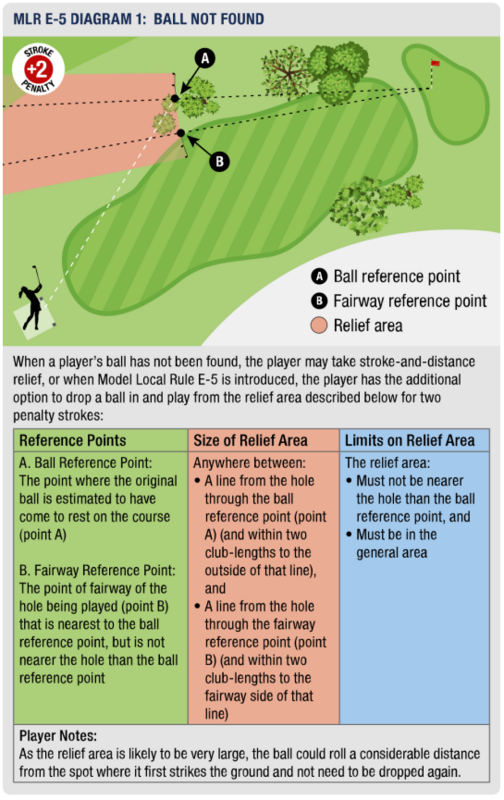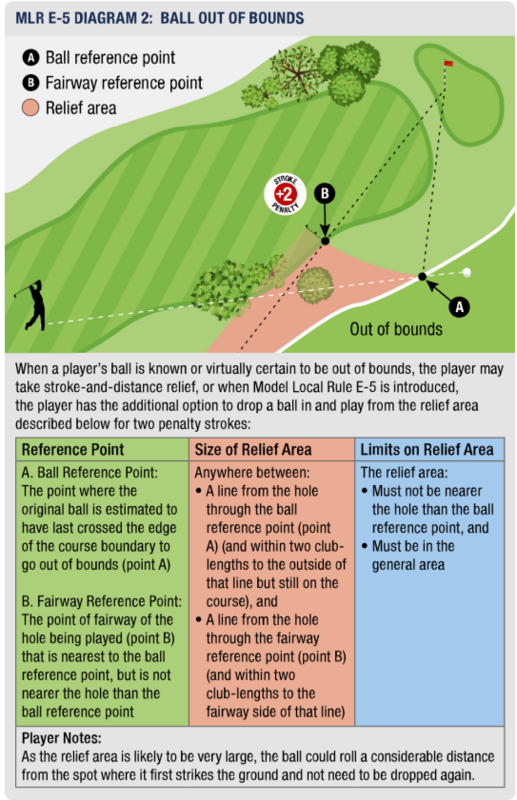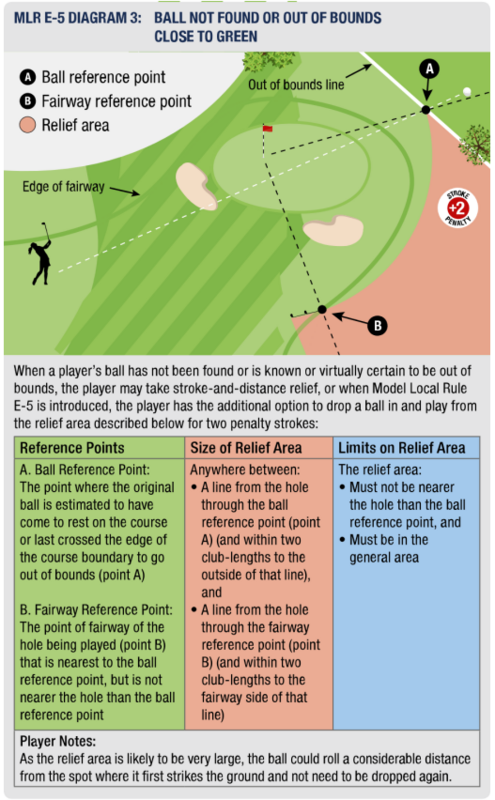The Golf Collective – New Rule Implementation
TGC Implementation of Model Local Rule E-5
Starting January 1, 2025, The Golf Collective will implement Model Local Rule E-5, offering an Alternative to Stroke and Distance for lost balls or those out of bounds. This rule, aligned with the R&A’s 2019 Rules of Golf, is designed to improve pace of play by allowing players to drop near the likely location of the lost or out-of-bounds ball instead of returning to the previous shot location. This drop, taken with a two-stroke penalty, applies to all shots, not just tee shots.
How It Works
When your ball is lost or out of bounds, you can either:
- Play a Provisional Ball (standard stroke and distance).
- Take Relief with the New Rule, allowing you to drop at:
- The Ball Reference Point (where it last crossed into rough or out of bounds).
- The Fairway Reference Point (nearest fairway point, no closer to the hole).
Both options incur a two-stroke penalty, helping to keep play moving and reduce frustration from excessive penalties.
Imagine a player, let’s say Alex, hits a tee shot that goes into thick rough, possibly out of bounds or lost.



Example
Option A – Play a Provisional Ball (Stroke and Distance):
Alex can declare a provisional ball, re-hit from the tee, and play the third stroke from the fairway if the first ball is lost or out of bounds.
Option B – Use Model Local Rule E-5:
If no provisional was hit, Alex can locate the area where the ball likely landed and drop with a two-stroke penalty. He can drop at either:
- The Ball Reference Point: Where the ball crossed out of bounds.
- The Fairway Reference Point: The closest spot on the fairway, no closer to the hole.
With either option, Alex would now be playing his fourth shot, saving time and reducing frustration.
Benefits of the New Rule
The new rule reduces the need to hit multiple provisional shots, helping to avoid time-consuming setbacks when both the original and provisional ball are lost or out of bounds. This flexibility is especially beneficial for casual rounds, promoting a faster, smoother playing experience.
Here is a link to watch the video explaining the rule – watch here
For more details and guidance on this rule, consult The Golf Collective team.














